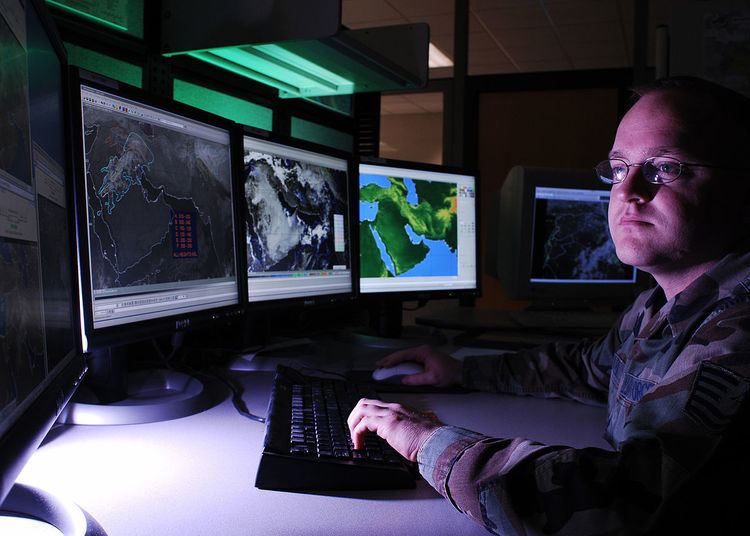 | ||
Military meteorology is meteorology applied to military purposes, by armed forces or other agencies. It is one of the most common fields of employment for meteorologists.
Contents
World War II brought great advances in meteorology as large-scale military land, sea, and air campaigns were highly dependent on weather, particularly forecasts provided by the Royal Navy, Met Office and USAAF for the Normandy landing and strategic bombing.
University meteorology departments grew rapidly as the military services sent cadets to be trained as weather officers. Wartime technological developments such as radar also proved to be valuable meteorological observing systems. More recently, the use of satellites in space has contributed extensively to military meteorology.
Military meteorologists currently operate with a wide variety of military units, from aircraft carriers to special forces.
Chain of Command
Enlisted
Enlisted meteorology and oceanography forecasters are called Aerographer's Mates.
Officer
Naval meteorology and oceanography officers are restricted line officers in the Information Dominance Corps.
